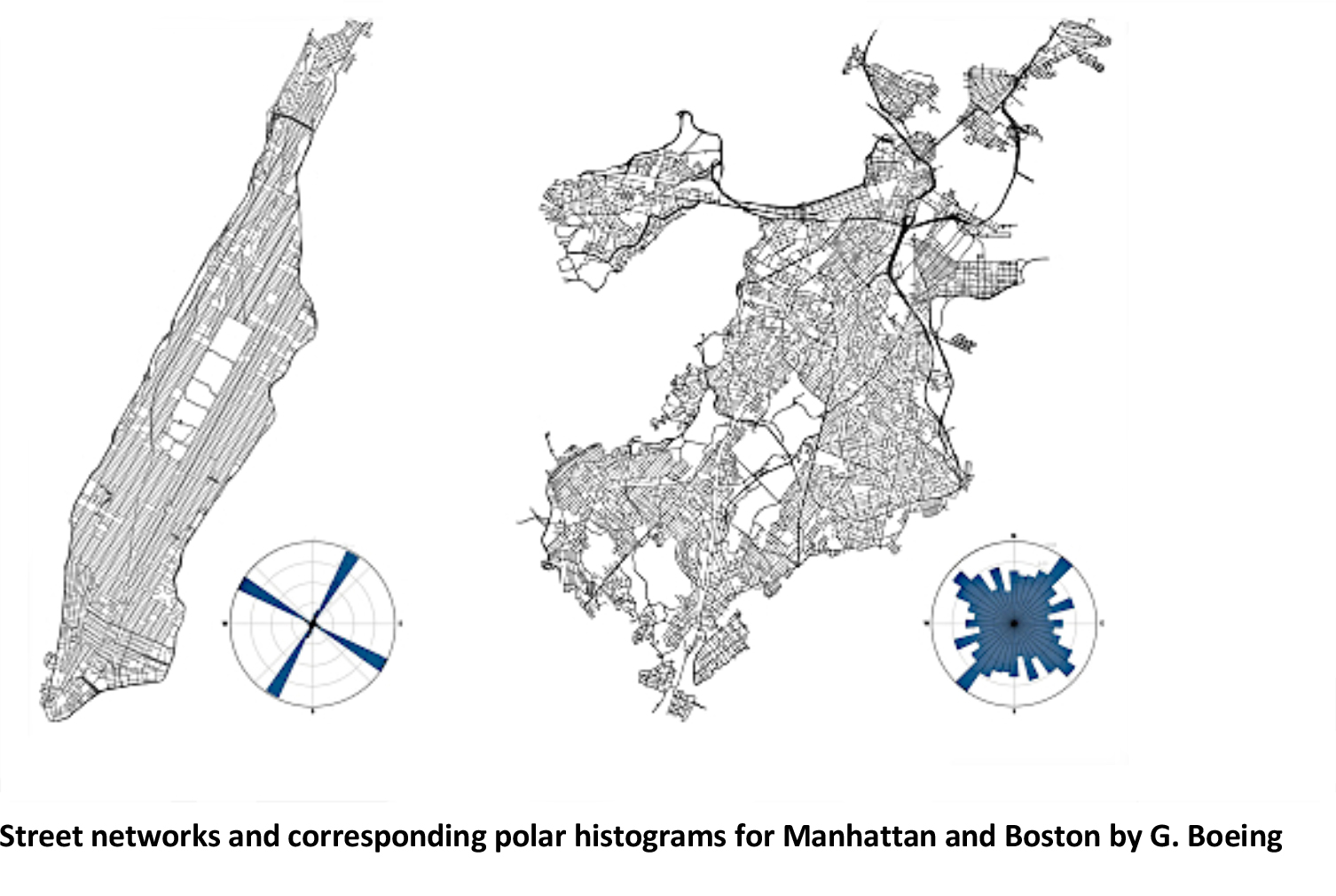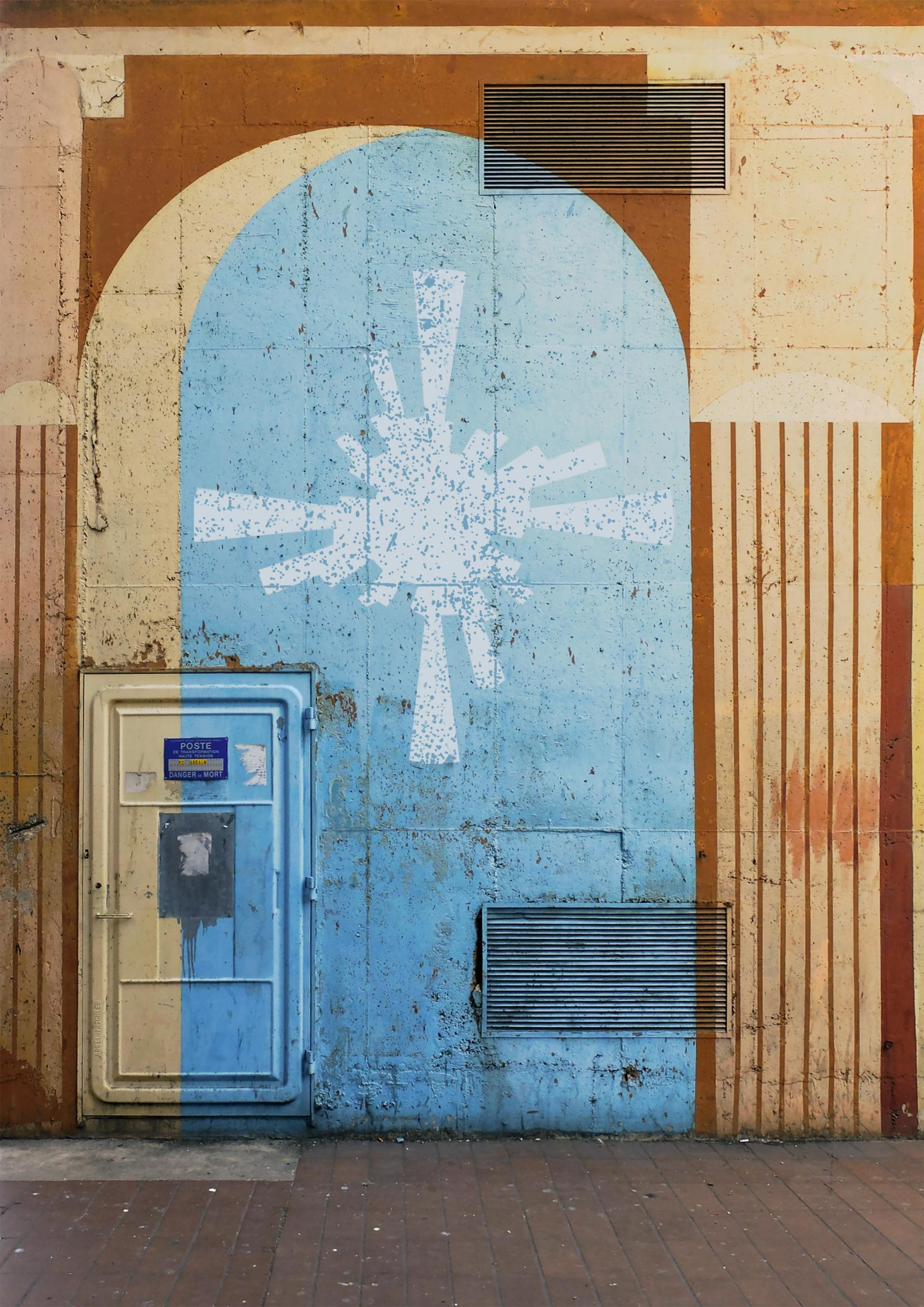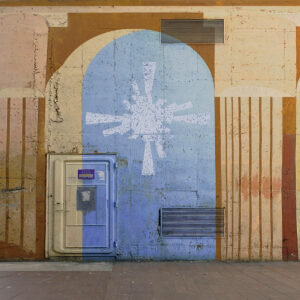What is the meaning of urban morphologies and how resilient are they? What do cities and modern art have in common? How relevant is the concept of entropy? The three questions converge towards a universal representation of one of our contemporary urban drivers: the grid.
Sixty years ago, Kevin Lynch (1) introduced the concept of urban imageability and how paths, edges, nodes and districts should be patterned together to produce a satisfying form. He also introduced the idea that their interactions may reinforce one another, resonate so that they enhance each other’s power, or that they may conflict and destroy themselves. With such sentence, K. Lynch’s concept contained already the seeds heralding the advent of engineering resilience. But when the book was published in 1959, urban life was not challenged by the threats we currently face. This issue is addressed by S. Salat & L. Bourdic (2) who describe ten processes explaining how and why cities changed more in the past twenty years than they had two thousand years before. Building on K. Lynch’s legacy, the authors argue that the evolving nature of cities is linked to forms, functions and connectivity. In a fascinating argument, they raise a pertinent question: why did historical cities keep most of their essential structure, retaining their identity despite so many changes? Will the urban grid be affected by current trends of climate change or urban sprawl? In other terms, how resilient is the grid?
A city is either a tree or leaf (2). Both show a gridded structure with natural nodes and paths. But when you need to go from one twig to the other, you will move down and then up all the hierarchical structure of the tree branch. On the contrary, the veins of a leaf show a capillary structure enabling to be entirely connected at intermediary levels. The leaf structure allows a scale-free distribution improving the intensity of connections and allowing a redundancy potential much higher than with a tree structure. So does a (resilient) city. Going one step further, M. Batty & P. Longley (3) argue that fractal geometry can be applied to urban networks due to their repeating patterns, emphasizing the analogy between fractal distribution in nature and each urban component seen as a reduced scale of its total entity.
Intuitively, the way a city is “structured” raises the question of how ordered or disordered it is, or in other terms, its entropy level. The idea linking entropy to disorder should be credited to Ludwig Boltzmann and Max Planck who applied the second law of thermodynamics to the number of possible atoms arrangements in a closed system: the higher the number, the higher the entropy, the higher the disorder. Can we apply the concept of entropy to socio-ecological systems to assess their resilience? Can we assume that redundancy might be linked to order or disorder? Far from certain, answer P. Cabral & Al (4): urban systems are not closed and the irreversibility principle of the second law can hardly apply. Though, entropy happens to be a useful tool to measure urban spatial order. Giving a new impetus to K. Lynch’s imageability, G. Boeing (5) used the Shannon entropy formula (6) to produce remarkable polar histograms of one hundred urban patterns. The below example shows two different spatial orientations with their related histograms. A city displaying a high level of orientation order translates into a low entropy histogram while a city displaying a lower level of orientation order shows opposite results.

Still, the question of urban resilience is pending as long as we cannot link the city morphology to its inhabitant needs. The assumed ability of resilient cities to adapt to an ever-evolving environment is not always consistent with a rigid approach of functionality. Le Corbusier’s “radiant city” was a utopia expressing a certain view of efficiency but limited to pairwise connections like “home-to-workplace”, with no link to other urban nodes. As summarized by N.A. Salingaros (7), the lack of interlinkage between different scales has adverse impacts on the potential of urban system. Interestingly, the city of Brasilia, built by Le Corbusier’s disciple O. Niemeyer, shows comparable rigid grid interconnections undermining its urban mobility facilities (8).
Echoing the urban mesh with or without a hierarchical structure, with a high or low level of entropy, grids developed into an amazing milestone, linking urban morphology, landscape design and modern art. Building upon the geometrical principles published by designers of the 18th century (9), revisited by the early modernist doctrines of purism, originality and novelty, the grid is our contemporary common denominator. Far from the sole purpose of its perspective representation, grids shape into a unique form within the whole of modern aesthetic production (10). The paintings of Mondrian, operating from the work of art either outward or inward depending on the way space is mapped inside the frame, count among the best examples of how art and urbanism can enrich each other (11).
The below photograph investigates the environment of Abraxa spaces, a housing complex often criticized for its monumental appearance, designed by architect Ricardo Bofill. Murals, painted lines, and structural elements as ventilation openings recall the grid prevalence in our urban environment. Centrally positioned, a “graffiti-star” has been inspired by urban histograms published by G. Boeing (5).

- K. Lynch, The Image of the city (Cambridge: MIT press, 1959)
- https://www.researchgate.net/publication/277872775_Systemic_Resilience_of_Complex_Urban_Systems
- https://www.researchgate.net/publication/30867789_Fractal_Cities_-_A_Geometry_of_Form_and_Function
- https://www.researchgate.net/publication/259333096_Entropy_in_Urban_Systems
- https://doi.org/10.1007/s41109-019-0189-1
- https://en.wiktionary.org/wiki/Shannon_entropy
- https://doi.org/10.1080/13574809808724416
- https://doi.org/10.1016/j.proenv.2017.03.060
- J. Corner, The landscape imagination (Princeton architectural press, 2014)
- https://www.tate.org.uk/research/publications/tate-papers/12/the-grid-as-a-checkpoint-of-modernity
- https://www.resi-city.com/2020/05/11/connecting-art-urban-grid-and-vulnerability/
